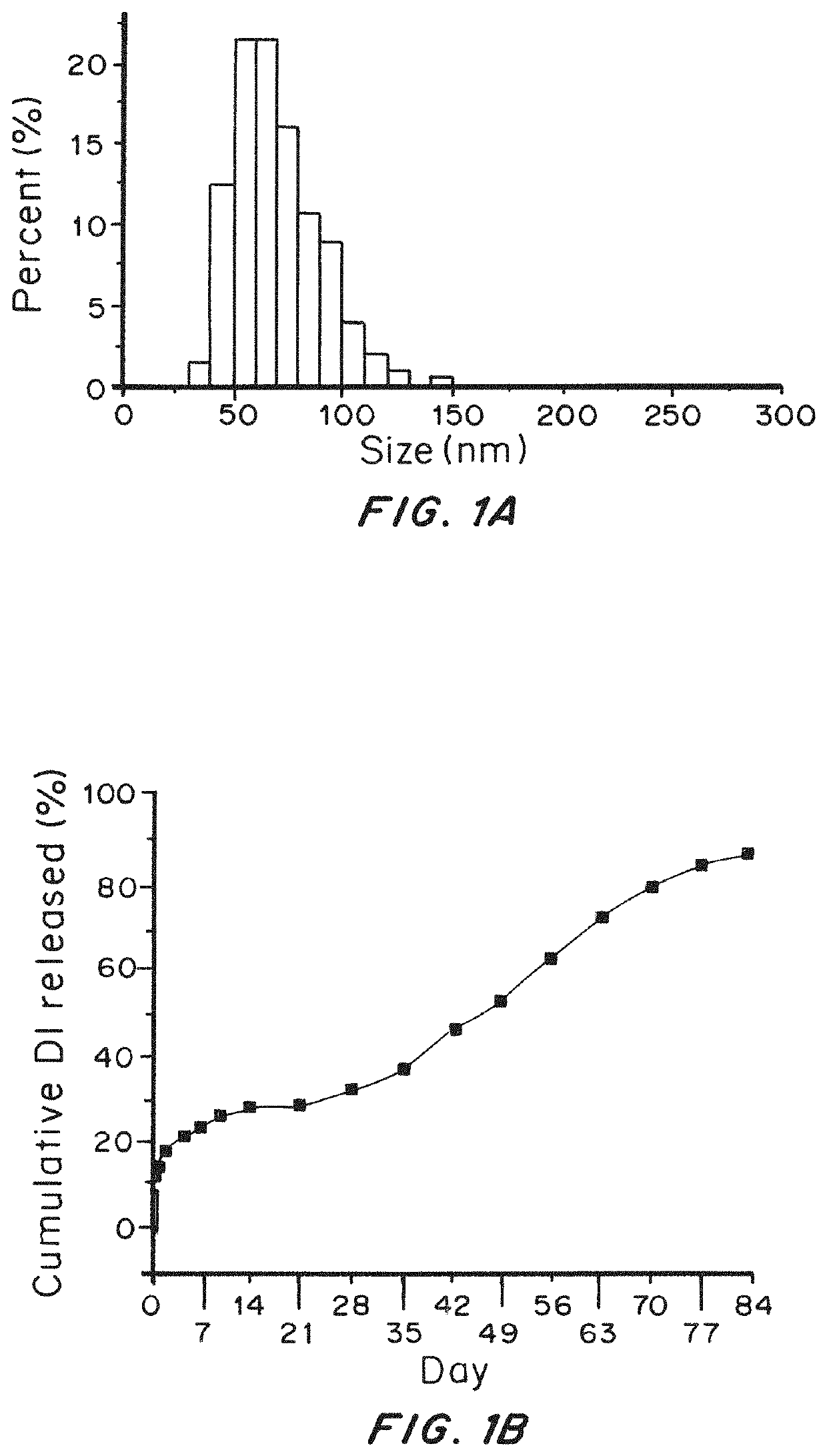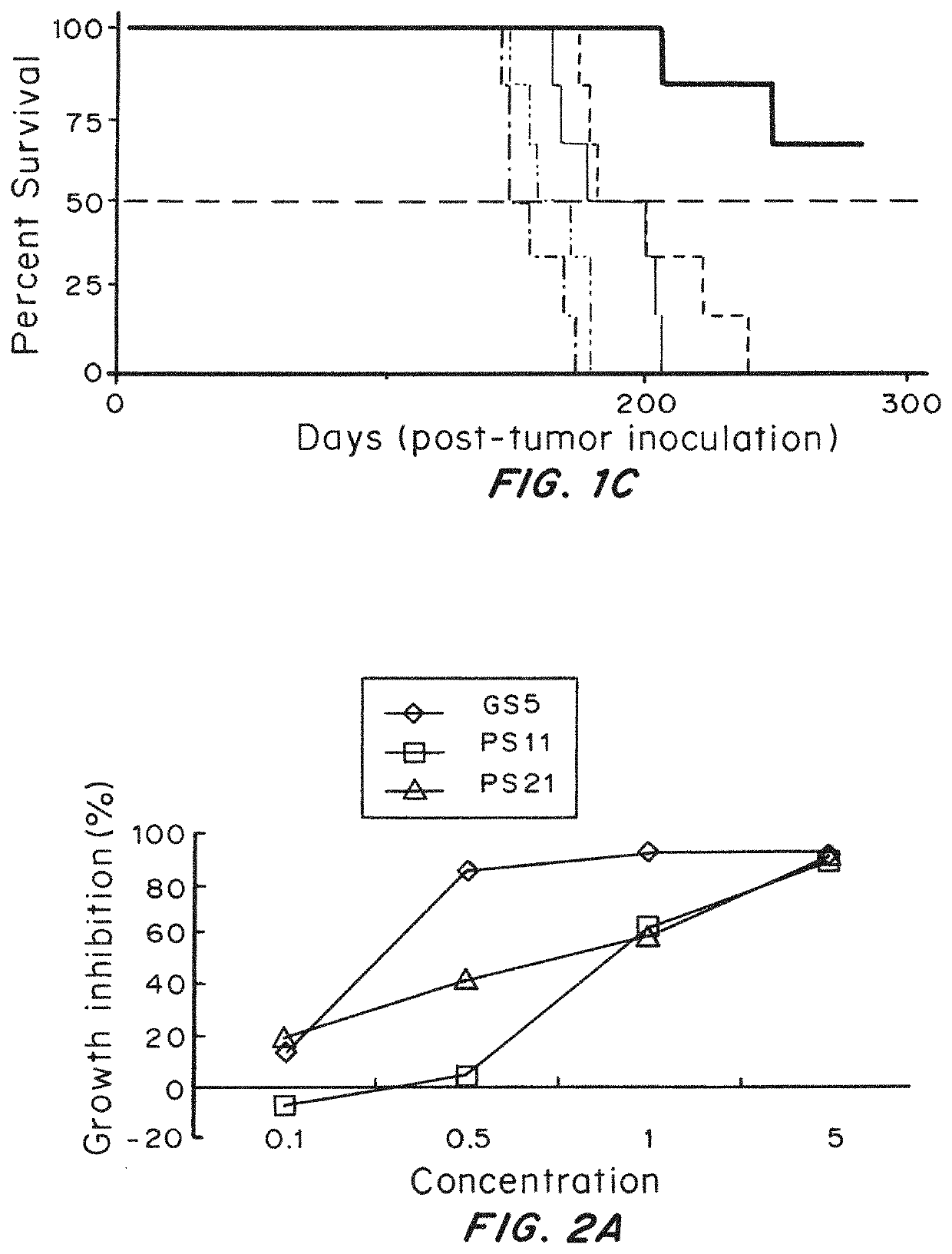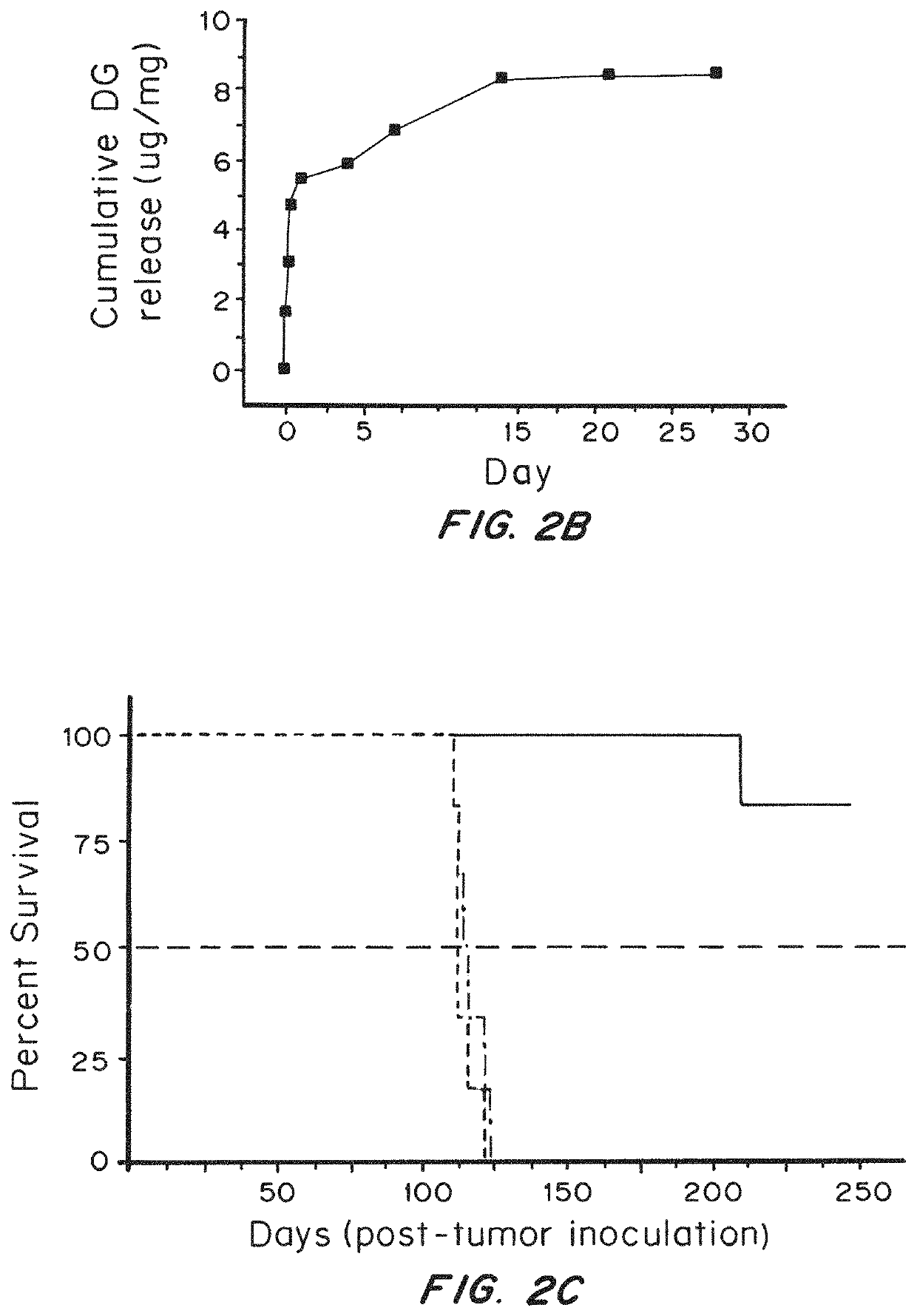Highly penetrative nanocarriers for treatment of CNS disease
a nanocarrier and cns disease technology, applied in the field of drug delivery, can solve the problems of limiting the efficacy of gbm, modest improvement in patient survival, poor prognosis, etc., and achieve the effects of improving the penetration depth of locally-delivered chemotherapeutics, improving survival rate, and improving survival ra
- Summary
- Abstract
- Description
- Claims
- Application Information
AI Technical Summary
Benefits of technology
Problems solved by technology
Method used
Image
Examples
example 1
of Brain-Penetrating PLGA Nanoparticles
[0076]Materials and Methods
[0077]PLGA nanoparticles were synthesized using a single-emulsion, solvent evaporation technique. Dichloromethane (DCM) was chosen initially as the solvent due to its ability to dissolve a wide range of hydrophobic drugs. A partial centrifugation technique was used to produce particles of the desired diameter. Specifically, after solvent evaporation and prior to particle washing, the particle solution was subjected to low-speed centrifugation (8,000 g for 10 min), which caused larger particles to pellet while keeping the smaller particles in the supernatant. The initial pellet contained comparatively large nanoparticles and was removed. Nanoparticles in the supernatant were collected and washed using high-speed centrifugation (100,000 g for 30 min).
[0078]Results
[0079]Scanning electron microscopy (SEM) showed that nanoparticles isolated using this protocol were 74±18 nm in diameter and morphologically spherical. The ty...
example 2
of Brain Penetrating NPs with Water-Miscible Solvent
[0080]Materials and Methods
[0081]Partially water-miscible organic solvents, such as benzyl alcohol, butyl lactate, and ethyl acetate (EA), allow nanoparticle formulation through an emulsion-diffusion mechanism and are able to produce smaller nanoparticles than water-immiscible solvents such as DCM. TEA was chosen because of its low toxicity. The same method otherwise was used as in Example 1.
[0082]Results
[0083]Nanoparticles synthesized using EA as solvent instead of DCM were 65±16 nm in diameter and morphologically spherical. The yield was improved with EA: 44%±3%.
example 3
ction of Brain-Penetrating PLGA Nanoparticles
[0084]Materials and Methods
[0085]Lyophilization is a technique commonly used to stabilize nanoparticles for long-term storage. However, lyophilization can also cause nanoparticles to aggregate, making them difficult to resuspend in an aqueous solution. Furthermore, particle aggregation, if it did occur, could complicate CED infusion and restrict penetration in the brain. To reduce aggregation, the FDA-approved disaccharide trehalose was added as an excipient, at a ratio of 0.5:1 (trehalose:nanoparticles) by mass immediately prior to lyophilization.
[0086]Results
[0087]The addition of trehalose did not alter nanoparticle size, morphology, or yield. SEM images demonstrated that trehalose enhanced the separation of nanoparticles from one another when compared to nanoparticles lyophilized without trehalose. Reconstitution of cryoprotected brain-penetrating nanoparticles resulted in a homogenous solution, while reconstitution of nanoparticles ly...
PUM
| Property | Measurement | Unit |
|---|---|---|
| diameter | aaaaa | aaaaa |
| diameter | aaaaa | aaaaa |
| diameter | aaaaa | aaaaa |
Abstract
Description
Claims
Application Information
 Login to View More
Login to View More - R&D
- Intellectual Property
- Life Sciences
- Materials
- Tech Scout
- Unparalleled Data Quality
- Higher Quality Content
- 60% Fewer Hallucinations
Browse by: Latest US Patents, China's latest patents, Technical Efficacy Thesaurus, Application Domain, Technology Topic, Popular Technical Reports.
© 2025 PatSnap. All rights reserved.Legal|Privacy policy|Modern Slavery Act Transparency Statement|Sitemap|About US| Contact US: help@patsnap.com



